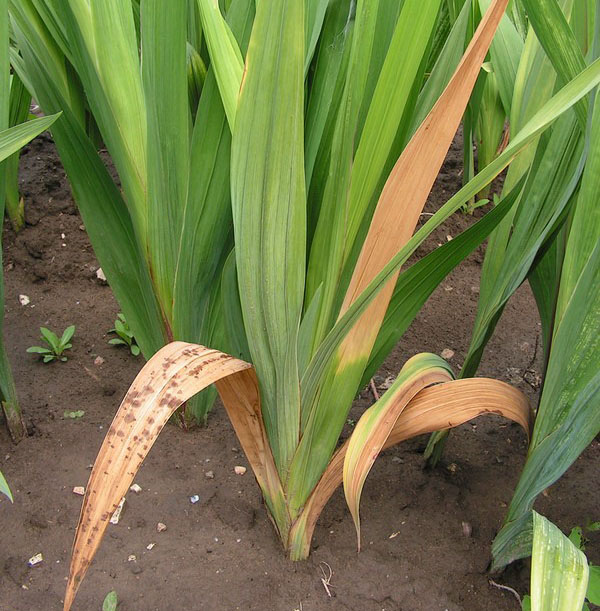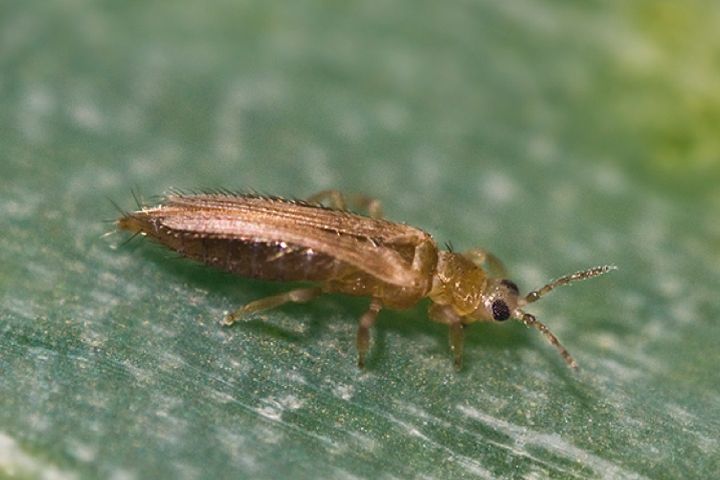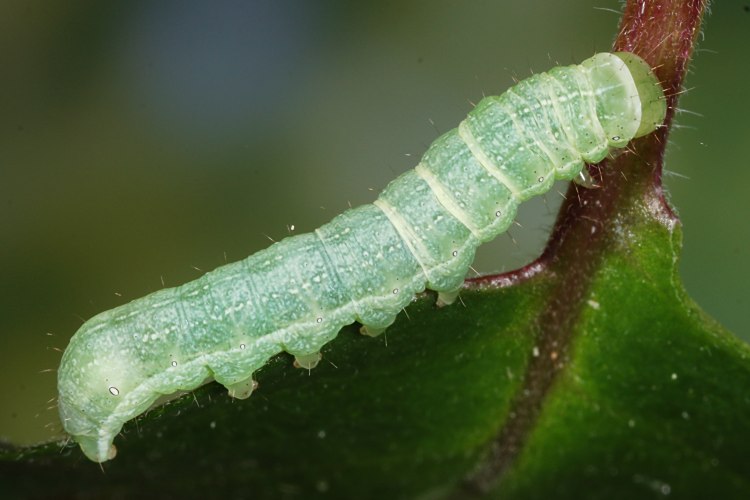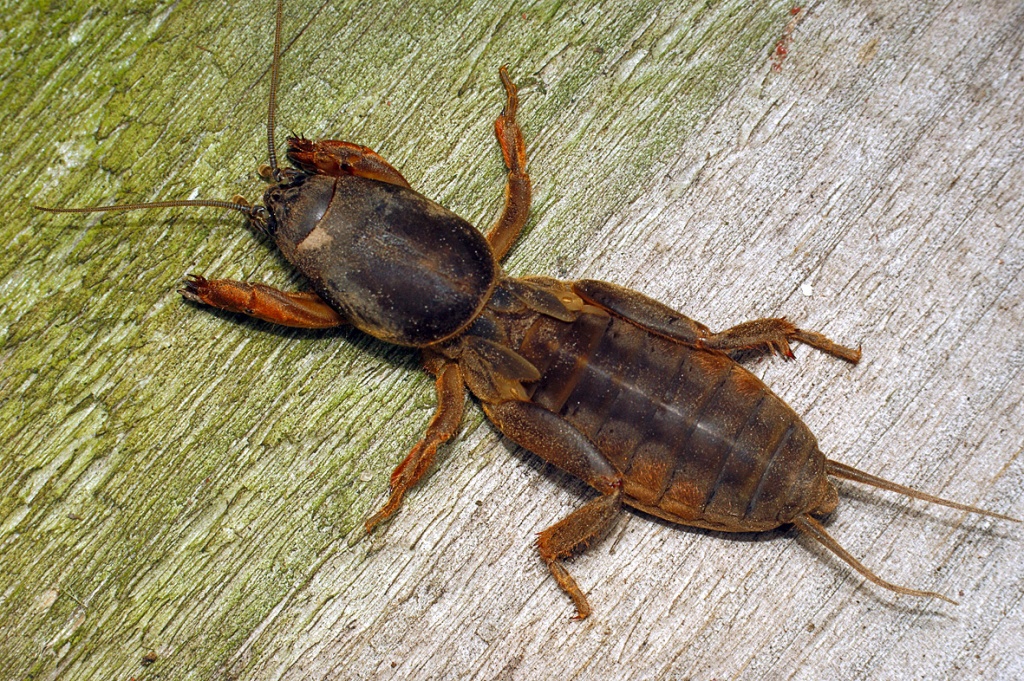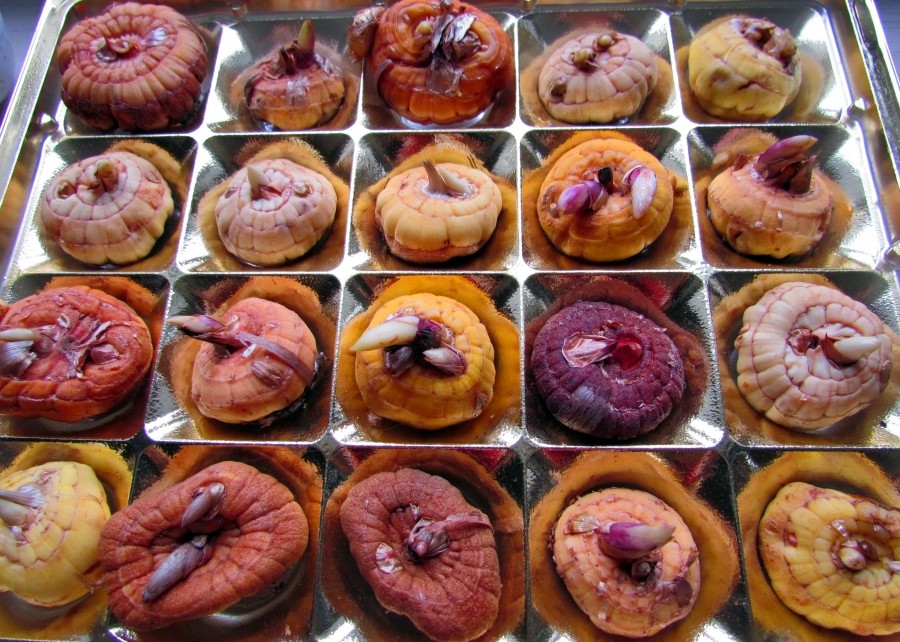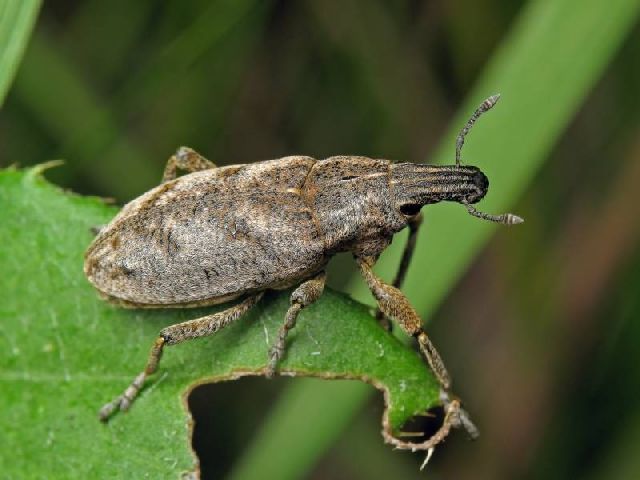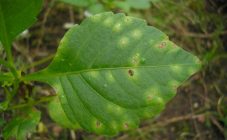Content:
Of the garden flowers, gladiolus is considered one of the most resistant to diseases, but it is not immune from the invasion of insects. If pests of gladioli have settled on a flower, it becomes not as spectacular as a healthy plant. Gladiolus wilts, withers and gradually dies, so it is important to detect pests in time and get rid of them.
Infection with pathological insects occurs for various reasons.
If a healthy plant is planted in soil infected with fungal spores, it will surely get sick, therefore, before planting, not only planting bulbs are disinfected, but also the soil in which gladioli are planted.
What pests gladioli eat
All bulbous plants are susceptible to disease, gladioli are no exception. Once they were considered a weed, small wild gladioli still grow in the fields in Africa. The decorativeness of the flower was achieved through long-term selection, therefore, like hybrid flowers, their defenses are reduced, and they are susceptible to many diseases. It is necessary to figure out what kind of pest the gladiolus has, and choose a method of dealing with it.
Consider who eats gladioli, and how to recognize the disease.
Fungus, late blight
The most dangerous disease affects the leaves and bulb. Spores of the fungus persist in the soil for a long time, are easily carried by the wind. The most common fungal diseases are fusarium (dry rot), they are easy to get infected, the diseased plant always dies.
If there are signs of phytophthora on the gladiolus, it means that the fungus has also affected the entire surrounding space.
Disease manifestations:
- the lower part of the leaves is covered with black bloom;
- flower petals get wet and rot;
- shoots turn black.
With fusarium, the lower leaves are affected, the fungus gradually descends to the bulb, infects it, which causes the death of the entire plant.
Gray rot appears at the base of the leaves, gradually spreads to the whole plant, then affects the corn bulb.
Thrips
As a result of damage by thrips, traces of insect excrement appear on the plant in the form of black dots, yellow stripes, white spots. The affected plant is depleted and dies quickly.
Insect Description:
- body - brown, 2 mm long;
- the head is black;
- the wings are velvet;
- the larva is yellow, 1 mm long, the eyes are red.
The female lays offspring in the scales of the bulbs, where the larvae reproduce continuously, even when winter comes. A new generation is born every 2 weeks. They feed on the sap of a flower, the largest number of them appear when the plant is gaining full strength and actively blooming.
When autumn comes, the thrips sinks closer to the root part, gradually moving under the scales of the root bulb. If an infected bulb is stored, it will become sticky, shriveled and dry out.
Caterpillars
Caterpillars of different species do no less harm to gladioli. The wire-like striped nutcracker reproduces when spring comes and is a carrier of bacterial diseases, inhabiting places where a lot of weeds grow.
Green caterpillars on gladioli appear if the vegetable crops on which they live grow nearby. Crawling onto flowers, they mercilessly destroy the green mass, as a result of which flowering stops.
The cabbage scoop feeds on the leaves and buds of the flower at night, eating huge holes on them, you must immediately get rid of such leaves.
If the area is humid, slugs attack the flower. The caterpillar on the gladiolus damages the leaves, root tuber, while leaving behind silvery traces.
Root mite
Even a perfectly healthy flower bulb can become infected with a root mite. Gardeners cannot understand who eats a gladiolus leaf if all disinfection rules are followed when planting.
Infection occurs through the soil, in which the tick appears from the remains of other diseased plants. The mite penetrates the bottom of the root bulb, settles in it and begins to multiply. The root becomes rotten, changes color to dark brown. When such a bulb is planted, the contamination of the surrounding land continues.
Mosaic disease
The disease is of viral origin, manifests itself in the form of spots on the leaves and curly stripes of yellow, gray, greenish color between the veins of the leaves.
In diseased plants, flowers are small, often with swirling variegated petals.
Medvedka
The insect is found in humus-rich soil, digging underground passages with its front legs, getting to the roots of plants. It gnaws on the gladiolus bulbs, the flower begins to turn yellow and dies. During the laying of eggs, the bear destroys the roots of all plants that surround the nest, so that the earth in this place warms up better.
How to kill pests
When infected with a viral disease, it is useless to fight the disease, the plant is completely destroyed.
It is preferable to clean the soil from pests - by a chemical method, and bulbs - by a thermal method. For this, the soil is treated with insecticides, and the tubers are kept in water for 30 minutes at a temperature of 50 degrees.
To protect against late blight, the following treatment is used:
- dissolve 15 tablets of Trichopolum in a bucket of water, spray flowers 2-3 times a month;
- Fitosporin and Fundazol are used according to the instructions.
How to treat gladioli from thrips:
- weak tubers must be discarded;
- for 30 minutes, place the bulbs in "Karbaphos" - an insecticidal preparation;
- dry;
- put in a refrigerator at a temperature not lower than 8 degrees Celsius for storage.
If thrips appears on the gladiolus, use the following control measure:
- when spring comes, it is necessary to spray the tubers with diclofos before planting;
- put in a bag for 1 hour, tying it.
Double processing will help completely remove the thrips from the bulbs.
Preventive measures
Only healthy tubers should be laid for winter storage.
To prevent disease:
- watering flowers with water in which fungicides are bred;
- gladioli are planted in well-ventilated areas;
- planting diseased roots is unacceptable;
- change the place for sowing gladioli every 2 years;
- in the fall, the soil is disinfected with a manganese solution;
- plant gladioli in places where calendula, nasturtium and other annual phytoncids used to grow;
- remove weeds regularly;
- periodically spray the flowers with garlic tincture.
In order for gladiolus to grow healthy, it is necessary to regularly treat it with antibacterial solutions, clean the soil from weeds, and disinfect the soil. Such measures will help grow healthy, beautiful flowers.

